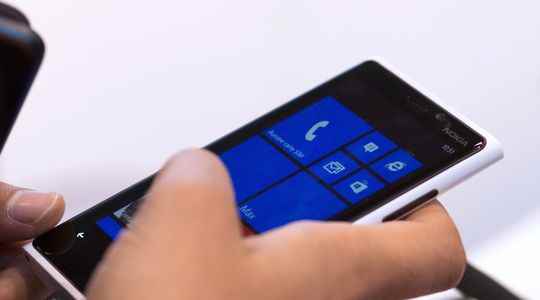This is an important update. Since Saturday June 4, iPhone users have been receiving a request for an “update of operator settings” so that their mobile can display a new device, called “FR-Alert”. Concretely, people present in an area facing a danger will be able to receive a notification on their smartphone, accompanied by an audible alert and a vibration, even in silent mode. On the other hand, a phone in airplane mode or off will not receive it. On conventional phones, the notification will take the form of an SMS. The “carrier settings update” is not necessary on Android smartphones, which are already configured in this way by default.
As explained by the Ministry of the Interior“FR-Alert”, which will be operational everywhere in mainland France and overseas at the end of June 2022, “is a population alert system which allows notifications to be sent to the mobile phones of people present in an area facing danger”.
The notifications may transmit information on the nature of the risk (a fire, a flood, a storm, a gas leak, an industrial incident, an act of a terrorist nature, etc.), the authority issuing the alert, the location of the danger or the attitude to adopt (stay at home, evacuate the area, etc.).
The “FR-Alert” system has the advantage of targeting a specific population pool, to alert only the people concerned, thanks to telecommunications networks. There is no need to pre-register to receive alerts, regardless of where the person is located and what cell phone they use. No app is required to receive mobile phone alerts. This new system also does not allow the State to collect location data.
The device combines two different technologies: cell broadcasting (“Cell Broadcast”), available from the end of June 2022 and geolocated SMS (“LB-SMS or Location-Based SMS”), which will be deployed later, specifies the Ministry of the Interior. These technologies make it possible to send messages to all the mobile phones present in the territory concerned by the alert, as soon as they are connected to the network. If geolocated SMS typically work on 2G, 3G, 4G, the broadcast of large volumes of SMS can take longer than cell broadcasting, which will in turn allow the population to be alerted in a few seconds.
Cellular broadcasting, already used in particular in the United States and Japan, is therefore based not on SMS, but on radio waves broadcast by telecommunications antennas. Notifications are lighter than SMS, which avoids saturating the network when sending to a large number of people, recalls Franceinfo. But this technology is based on 4G, and in the future 5G, which excludes conventional phones.
The previous SAIP, which “never worked”
The French authorities had tried to create an application fulfilling the same functions, known as SAIP (“system of alert and information of the populations”). Launched in May 2016, after the 2015 terrorist attacks and before the Euro football tournament, the mobile application better known as “Attack alert” was intended “to provide the ministry with a tool that would give the population rapid and reliable information in the event of a major event”. But it “has in fact never worked”, declared the Minister of the Interior Gérard Collomb before the National Assembly, when Senator Jean-Pierre Vogel was already pointing out his dysfunctions in a report published in June 2017.
SAIP had been downloaded little: only some 900,000 times by users. It must be said that she often failed to work in time. Thus, during the attack on the truck on the Promenade des Anglais in Nice, on July 14, 2016, SAIP had taken more than an hour before triggering the alert. On March 23, 2018, in Trèbes in Aude, no alert had been issued during the hostage-taking in the Super U. Because of these failures, the government had decided on May 29, 2018 to end SAIP .
To replace it, the Ministry of the Interior relied on social networks via free partnerships with Facebook, Google or Twitter. “Rather than trying hard to create a new application specific to the ministry, we decided to use modern technologies”, summarized Gérard Collomb at the time. The authorities had thus used Facebook’s “Safety Check” application – launched in 2014 and which allows Internet users located in a place to tell their friends that they are not at risk – to broadcast messages.
“In the same way, Radio France, France Télévisions, RATP, Vinci Autoroutes have agreed to relay our messages as a priority,” added the minister at the time. A Twitter account @Beauvau_Alerte was also activated in May 2018.
“FR-Alert” will therefore be added to these existing alert systems, which also include sirens and the broadcasting of messages on television and radio. This alert system was announced after the fire at the Lubrizol factory in Rouen on September 26, 2019. It “is obviously a revolution in alerting the population”, estimated in September 2020 the Minister of the Interior Gérald Darmanin during a press conference in Rouen, specifying at the time that “50 million euros have been budgeted” for this new service.
A European directive dated December 11, 2018 obliged France to have such a system anyway before June 21, 2022. Until the implementation of “FR-Alert”, notifications can already be sent as part of civil security or public safety exercises. “FR-Alert” for example was tested in the Bouches-du-Rhône from May 16 to 19, during the Domino 2022 civil security exercise, which surprised some residents.
